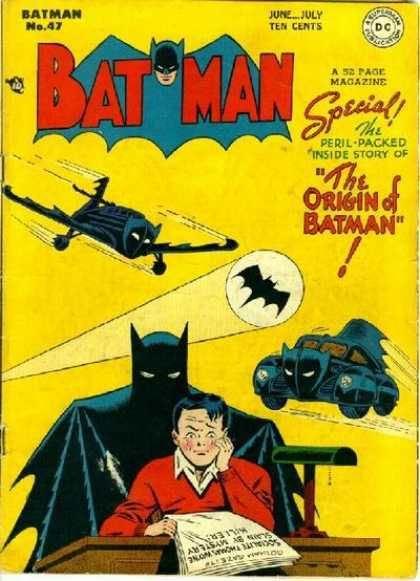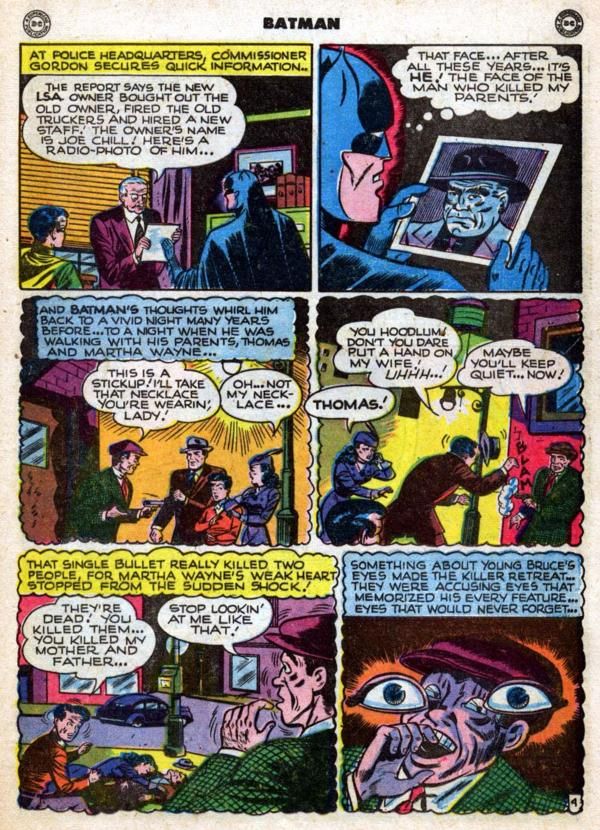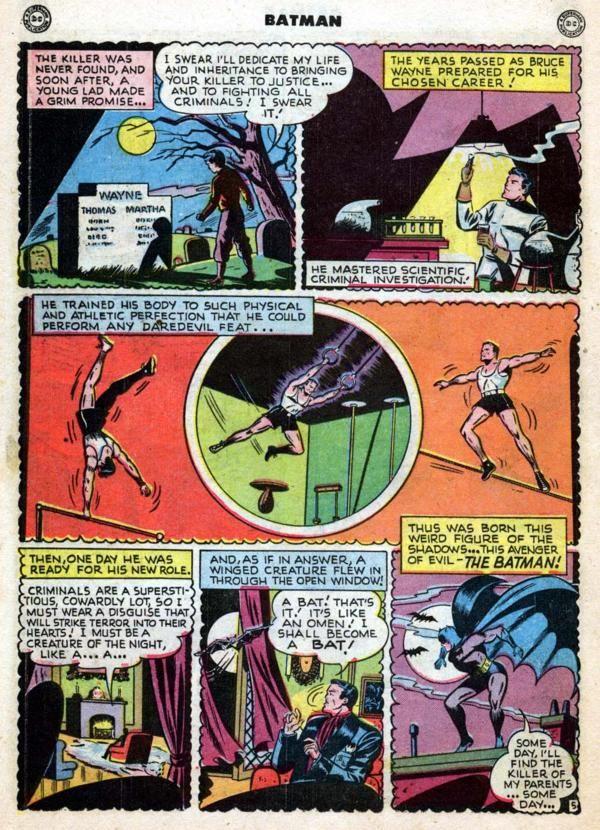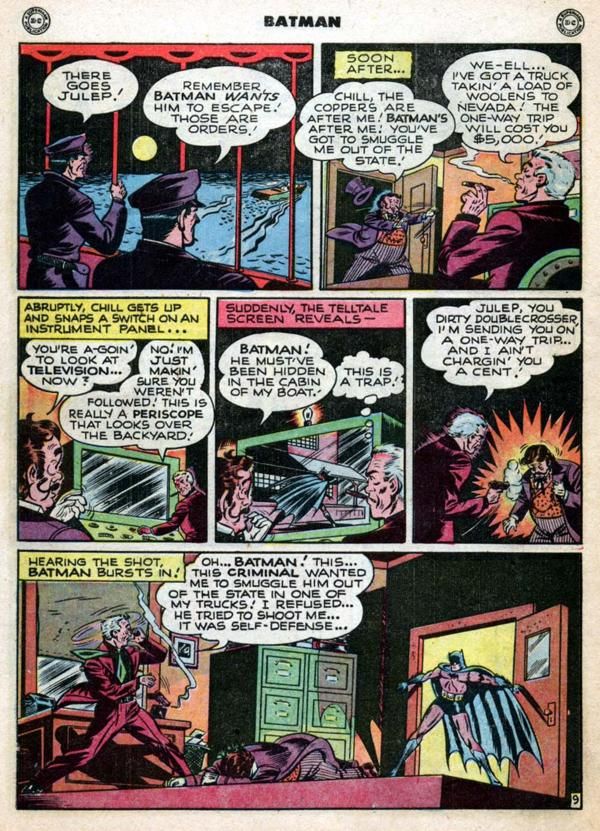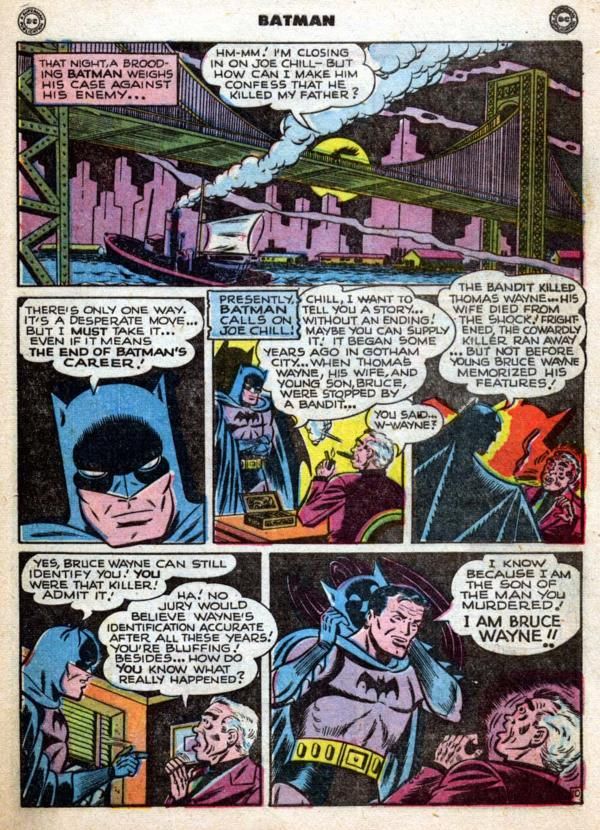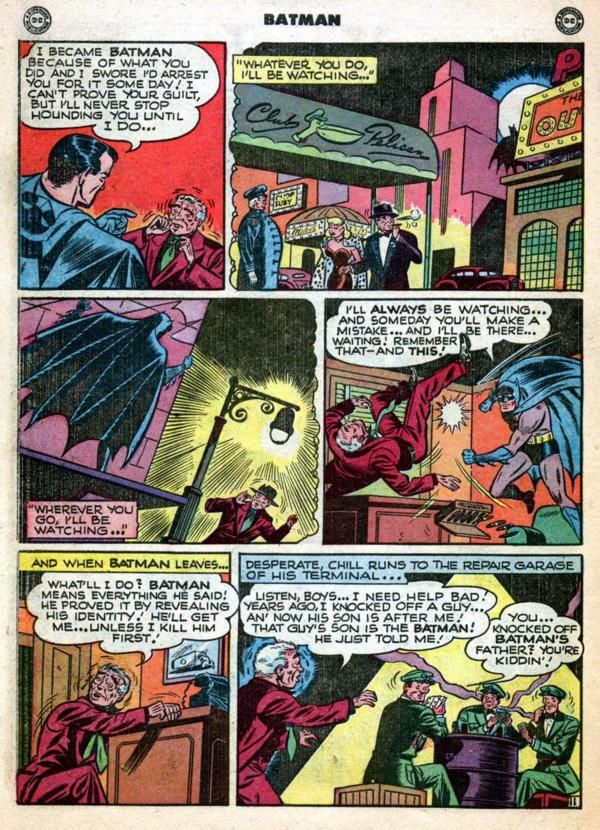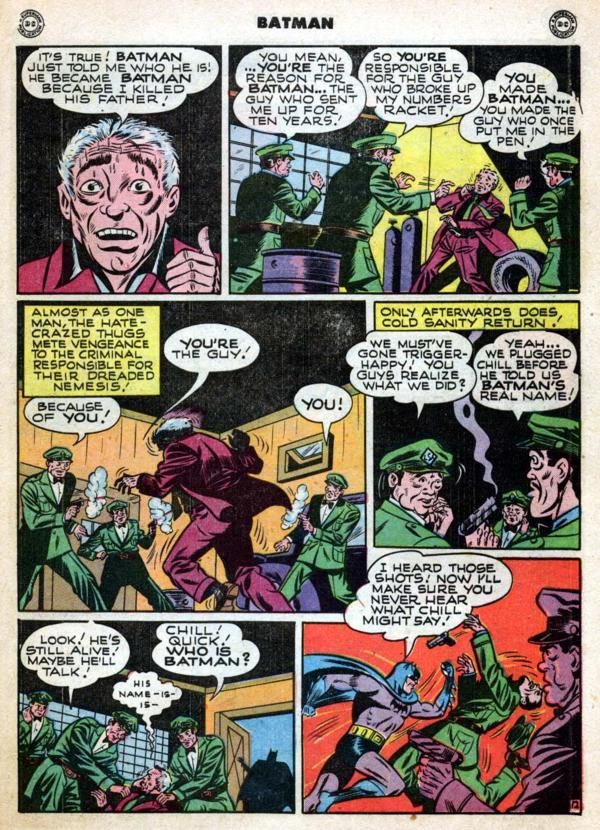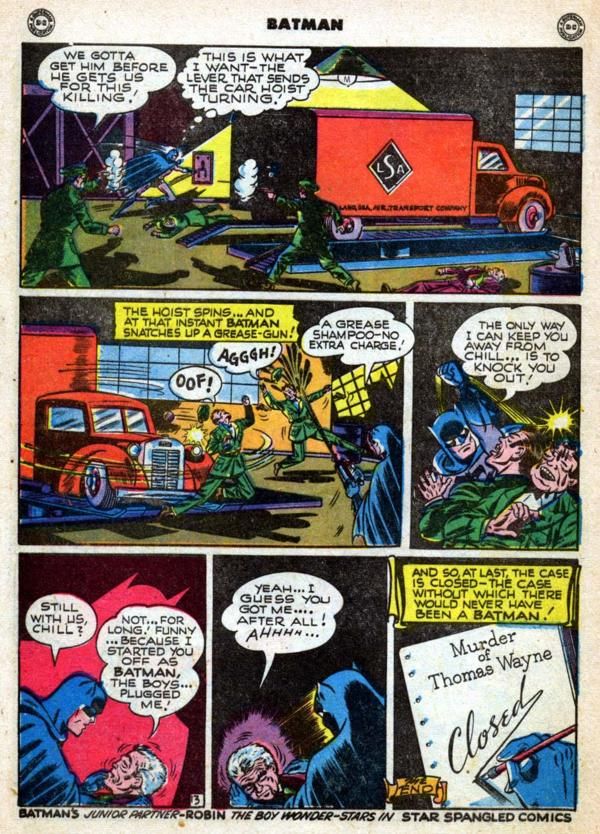Here is the latest in our year-long look at one cool comic (whether it be a self-contained work, an ongoing comic or a run on a long-running title that featured multiple creative teams on it over the years) a day (in no particular order whatsoever)! Here's the archive of the moments posted so far!
Today we take a look at Batman #47, by Bill Finger, Bob Kane and Charles Paris - the first full exploration into Batman's origin!
Enjoy!
Batman's origin was first displayed shortly into Batman's comic book career, in the seventh comic he appeared in, Detective Comics #33, in a short two-pager by Bill Finger and Bob Kane. However, that two-page origin was it for Batman's origins for nearly a DECADE until Batman #47, when Finger joined up with Kane and Paris to tell an expanded version of the origin as part of the return of Joe Chill - with a great twist at the end!
Before we get to the story (which is surprisingly the THIRD tale in the book!), check out the legendary cover to the issue...
The story begins with Batman and Robin stopping a criminal-trafficking scheme. Only when they investigate further, Batman discovers that the head of the scheme is the man who killed his parents!!
I believe this was the introduction of the name "Joe Chill" and the name "Martha Wayne."
Batman figures out a way to draw Chill out - he stops a bad guy, letting him run to Chill so that Chill could smuggle him out of the country...
That's a damned powerful scene there, eh?
It continues with a strong sequence here, leading to the big twist...
What a cool resolution to Chill learning Batman's identity! It's such a great idea that I almost wonder if Finger did not see it used somewhere else. Anyone recall a similar bit in a novel or pulp fiction story? It's an impressive sequence even if it is adapted from somewhere else.
Then the conclusion...
Very cool twist.
One funny bit, though, is that Finger apparently felt that what happened to Chill wasn't obvious enough, so he had Chill reiterate what was going on. They should totally adopt that style in other media. Dickens had a missed opportunity! Instead of ending A Tale of Two Cities with "It is a far, far better thing that I do, than I have ever done; it is a far, far better rest that I go to, than I have ever known" he could have ended it with "It is a far, far better thing that I do, than I have ever done; it is a far, far better rest that I go to, than I have ever known. I'm saying this because I'm sacrificing myself so that another guy could live."
You can find this story in the original Greatest Batman Stories Ever Told trade collection, plus I believe it was recently reprinted in a volume of Batman Chronicles.


